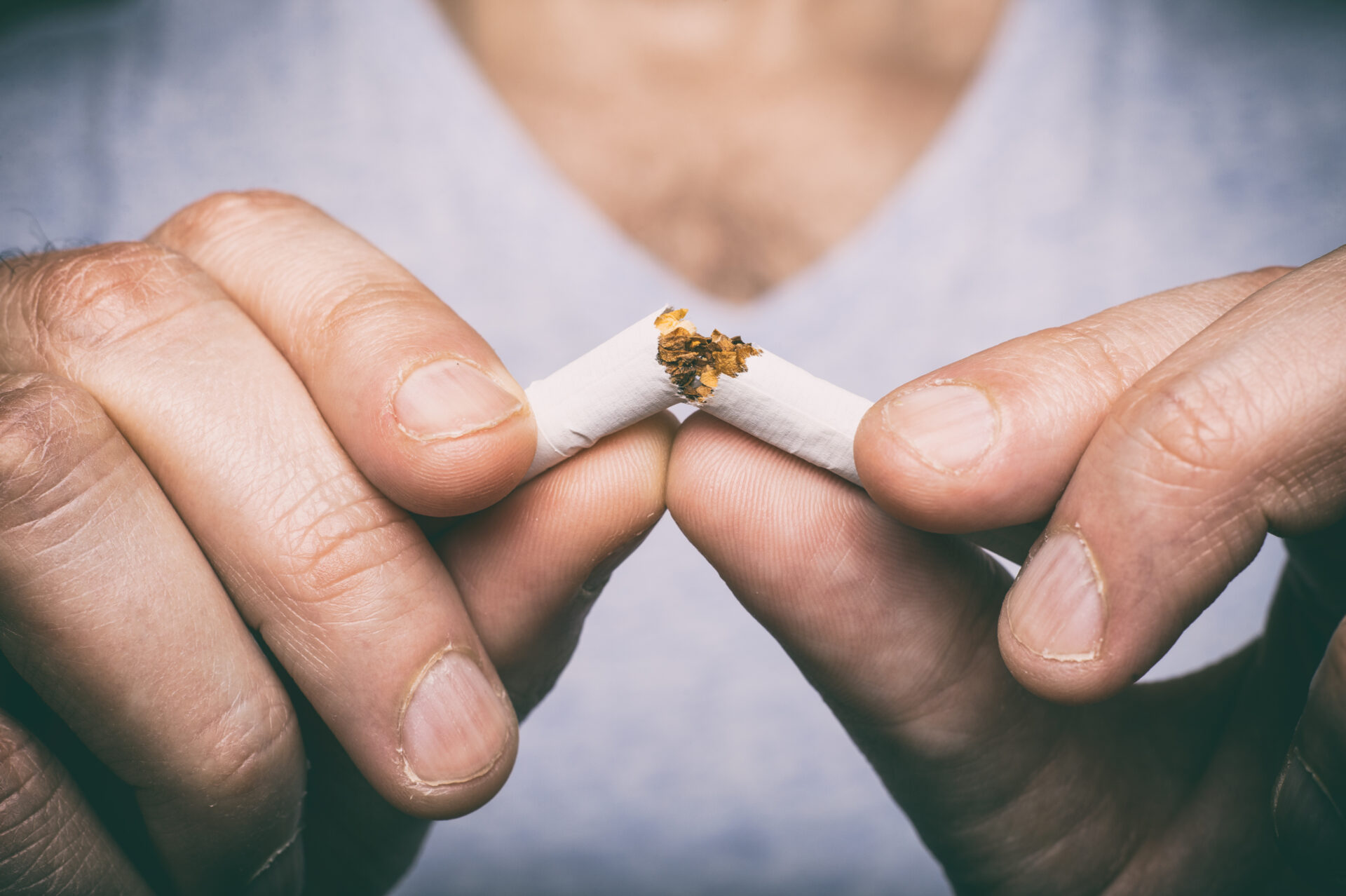Quit Smoking
Smoking Cessation
10 Reasons to Quit Smoking

1. Facial Wrinkles
- Forget the beautiful babes who peer from the advertising pages of fashion magazines, tailor-made cigarettes between their fingers. The first thing smoking will not do is give you the eyes and lips of a model. It will give you Crows Feet, wrinkled cheeks, and vertical lines around your mouth. That’s the true picture.
FACT: Smoking causes vasoconstriction of facial capillaries, which reduces the flow of oxygen and nutrients to skin cells. Say hello to premature wrinkling that is largely irreversible (even if you can afford the cash and handle the pain of cosmetic surgery).
2. Impotence
FACT: Smoking reduces peripheral vascular flow. In other words, the blood flow necessary to attain an erection may become blocked. As many as one in two American men older than 40 have experienced impotence to some degree. The condition is primarily physical causes, with smoking among them.
3. Stained Teeth, Bad Breath
FACT: Particles from cigarette smoke stain teeth brown and yellow, and cause odor-producing bacteria that become trapped in your mouth. Gum disease and tooth loss are also common in smokers. Not attractive. If you need some more oral reasons to quit, think about vocal-cord growths and cancer of the mouth, throat, and esophagus. Not to mention you taste like an ashtray.
4. You Smell
FACT: Cigarette smoke has an unpleasant odor that lingers on
- Everything from skin and hair to clothing and curtains. Ask a non-smoking friend for an honest answer about the way you, your car, and your home smell. The ugly answer: They all stink.
5. Brittle Bones
- Risk factors for the crippling condition of osteoporosis are well-known these days: female, white or Asian, inactive, past menopause, small frame, calcium deficiency, and genetic predisposition all contribute to low bone-mineral density. So does smoking. Numerous studies link smoking and osteoporosis in women and men. It may be because smoking affects the synthesis of estrogen and other hormones necessary for healthy bones.
FACT: A 1997 study that looked at 4, 000 hip fractures in elderly women concluded that one out of every eight fractures was due to smoking-related bone loss. Once lost, bone density cannot be fully recovered.
6. Depression
- The connection between smoking and depression has been well established. Look at the number of nutrients that get depleted with smoking.
7. BAD Role Model
- Children emulate adults. Every time you light up, you tell kids around you that smoking is OK.
FACT: Every day, an estimated 3,000 children in the United States become addicted to cigarette smoking. If they keep smoking, 1,000 of them eventually will die from conditions connected to their addiction.
8. Fire!
FACT: Fires caused by lighted tobacco products are the leading cause of fire deaths in the United States. During the 1980s, smoking materials started more than 200,000 fires every year and killed more than 1,000 people, while injuring 3,000 more and causing more than $300 million in property damage. If death by fire doesn't impress you, surely you can recall at least one time your cigarette burned a hole in your precious silk suit or cashmere sweater.
9. Poor circulation Drooling, paralysis, loss of speech.
FACT: There's nothing pretty about becoming the victim of a stroke.
- Hemoglobin cells are designed to carry oxygen throughout the body. In smokers, oxygen molecules are displaced by the components of cigarette smoke, blocking the transfer of life-giving oxygen. If you've convinced yourself that stroke is an extreme or unlikely consequence of your habit, there's always premature coronary heart disease to slow you down. If you're lucky, perhaps you'll only experience some of the inconveniences of poor circulation, like painful pins and needles or cold hands and feet.
10. You look stupid
No matter how a smoker justifies his or her addiction this is the simple, indisputable truth: Just like the slogan says, smoking kills. Makes the habit look kind of silly overall, doesn't it?

PSYCHOLOGICAL ASPECTS OF QUITTING SMOKING
These are important questions your client must answer from selves.
Ask them to fill it out, take it with them, be honest with themselves, and always take a deep breath.
Empowerment book.
1. Please take the time to make a DETAILED list of all of the
Reasons that helped motivate you to quit smoking.
2. Make a list of all the things you can do to distract yourself when
You get the urge. I.e. write a letter, take a walk.
3. Read the online book “Never Take Another Puff”. Read the online book “Never Take Another Puff” at http://whyquit.com/joel/ntap.pdf it’s a free PDF download.
4. Who in your life will also benefit from a healthy lifestyle?
What changes you are making today?
5. List a few of the daily actions you will be taking to achieve the level of health you deserve.
6. What are some of the negative aspects of what will happen in your life if you do not make the necessary positive changes?
7. Mentally and physically how are you feeling today?
8. If you are not feeling mentally and physically the way you like,
How would you like to feel?
9. What action will you take to start treating yourself better today?
Always bear in mind that your own resolution to succeed is more important than any one thing.
When quitting smoking, the thought of wanting a cigarette has been measured to last no more than two minutes. Although your client may feel like it's lasting forever remind them to get busy the distraction is what they need to take their mind off of smoking.
Once an addict always an addict just taking one puff and putting the nicotine back in the system will get them back to smoking the same amount as what they were when they quit.
Dark natural 70% chocolate or chocolate nibs if you like them. The PEA or phenylethylamine, in dark chocolate mimics the love molecules in your brain helping us to feel great. A small amount every day gives much-added pleasure to life. Milk Chocolate doesn’t count.
Remind them of how cigarettes reduced their stress levels, then explain this to them.
Cigarettes are alkaloid and stress is acidic. When you become stressed your nicotine tank starts to get low very quickly which is why you feel the need to go smoke, a sympathetic state. When a person smokes they set themselves up to relax, body position, and location. Nicotine is a stimulant it doesn’t reduce stress levels but when a person takes a slow deep drag in, holds it, feels it, and enjoys it…then slowly exhales,
...THAT WOULD RELAX ANYONE!
BUT being visual creatures we see the cigarette at the same time we feel the relaxation. Not to mention our drug with drawl state has been taken from sympathetic to parasympathetic we don’t have to refill the tank anymore.
Encourage them to keep a food journal for the first three weeks. This should have everything they eat or drink plus how they are feeling after they have had their snacks or meals.
